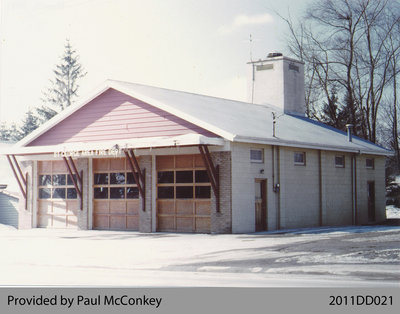
History of the South Dumfries Fire Department
Introduction
In the early 1900s fire was an ever present threat to any city, town or village. Many houses and shops were constructed of wood with roofs of cedar shingles and were placed closely together. The danger was even greater in the winter months, because chimneys had the potential to shower sparks on the roofs from wood burning stoves.
In the early 1900s, fire fighting equipment was relatively primitive. Pumps, cisterns and horse-troughs were used to supply water for fighting fires. Most homes had a cistern for soft water for washing. Not everyone had a well for drinking water. So many a householder with a pail in hand relied upon the town pump or a neighbor’s well for their drinking water.
Many homes in small communities had no running water until the late 1940s. In some localities water could be pumped from a nearby pond or a creek but they most often froze over in the winter months, and by the time a hole could be chopped in the ice for a water supply the building burned to the ground.
Up until about 1912, most communities organized themselves into bucket brigades. The bucket brigade was suitable for small fires or preventing the fire from spreading to other buildings, but usually they were hopeless in a large fire.


